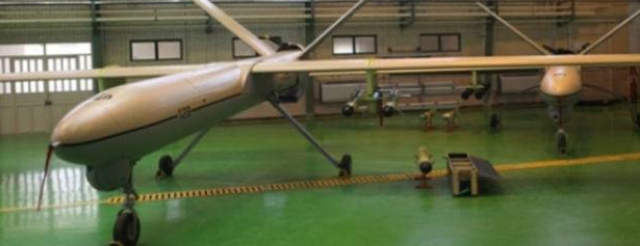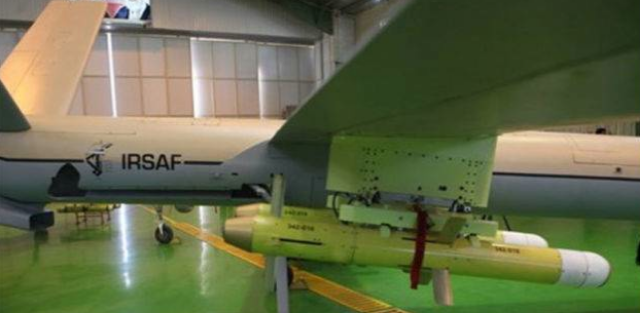Iran’s previous attempts at creating an indigenous UAS fleet have been rather, well, comical. However, with recent sightings of a this medium-altitude, long-endurance flyer in the skies over Damascus, Iran’s UAS programme may have finally reached the big time.
Dubbed the Shahed 129 (or “Eye-Witness”), this Unmanned Combat Aerial Vehicle (UCAV) measures roughly 26 feet long with a 52 foot wingspan. It reportedly has the endurance to remain aloft for up to 24 hours with a range of between 1700 and 2700 km (1000-1700 miles), a top speed of around 87 mph, and a service ceiling of 24,000 feet.
The UCAV also reportedly utilizes a way-point based autopilot system similar to Iran’s Karrar UAV when operating beyond range of its ground station. It’s also reportedly capable of carrying between four and eight Sadid missiles.
The Shahed made its debut at the Great Prophet 7 war games in 2012, entered full-scale production in September of last year, and is widely believed to be heavily influenced by the Israeli Hermes 450 UAV, though recent surveillance footage now suggests inspiration from the American MQ-1 Predator as well, given the Shahed’s close resemblance to both platforms. The Iranian craft sports a nose clearly reminiscent of the Predator’s while sporting a roof-mounted antenna.
This wouldn’t be the first (or even third) time that the Iranians have tried to pass off reworked western designs as their own. The US military has not reported losing an MQ-1 over Iranian territory, but that doesn’t mean the IRSAF couldn’t have gotten its hands on illicit parts through other channels. Unfortunately for them, just because the Shahed 129 looks like a Predator, doesn’t mean it will fly like one.
Source: Gizmodo


